
The only interruption of the Panamericana between North and South America is the Darien Gap. Due to the difficult terrain and the almost impassable rainforest, the road is interrupted here for over 150 km. Because this area is so difficult to access, it is one of the few untouched nature reserves in the world. Drug gangs and guerrilla groups also stay there, which is why crossing it by land, besides crossing the jungle, is very dangerous. In recent years, more and more migrants are using the Darien Gap to migrate from South to Central America to the United States. However, most travel a small section by boat to take only a short and much less dangerous route through the jungle. Nevertheless, there are always reports of gang crime, assaults or rapes towards the migrants.
I took a small boat from “Puerto Carti” a small port in the jungle on the Caribbean side of Panama to “Necocli” in Colombia. “Puerto Carti” belongs to the “San Blas Islands” which are home to the indigenous Kuna population. But before I go into the crossing, the way there was quite hair-raising and adventurous.
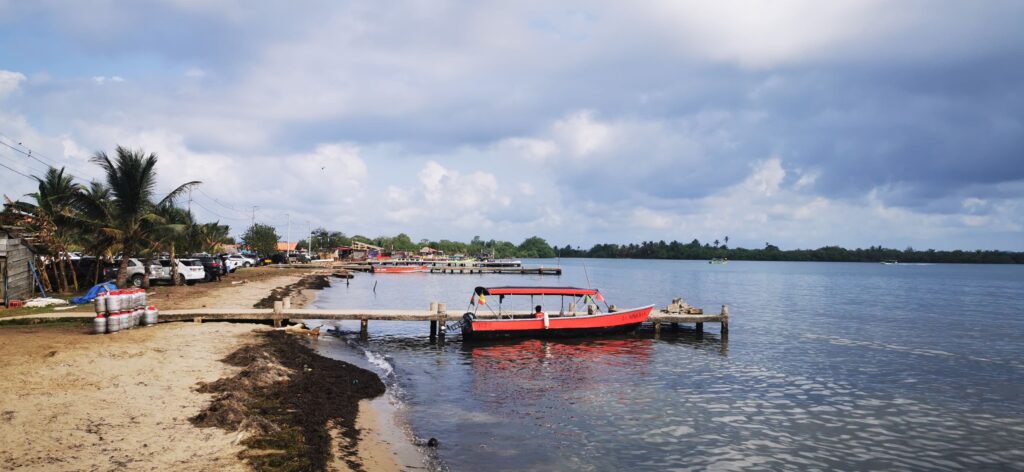

From Panama City I first drove along the Panamericana in the direction of “Darein”, where it ends after a few hundred kilometers in the city of “Yaviza” in the jungle. However, I didn’t have to drive quite that far, but turned off halfway onto a small side road leading to the Caribbean coast. Extremely hilly, with short but enormous climbs and an incredibly slippery surface, which made the whole route much more difficult, I drove or pushed the bike to “Puerto Carti”. Since only small motorboats, mainly for tourists, depart from there to one of the 365 tropical San Blas Islands and only a few boats go to Colombia, there was no official schedule. From different sources I learned that a crossing in the morning would be between 6 and 9 o’clock. Completely ko and soaking wet sweat I arrived in “Puerto Carti”. There I asked myself through the maze of all the private boat providers to organize an early crossing. Since no one had a clue or any more specific information about when the next boat to Colombia would leave, I had to be patient. In my conversations with people, I learned something different from everyone. Even at the port administration (a small building with a clipboard and a whiteboard, on which handwritten totally confused any boat tours with confused times were indicated) they could not help me. I was only told that the tourist season was over and the boats would no longer run regularly. They assured me that a boat would probably leave for Colombia the next morning or forenoon.
Helpless, tired and still totally sweaty, I needed a place to wash up and relax a bit. Since there was nothing to be found at the port, I drove to the nearest local islands to spend a night in the hostel. After a few minutes I arrived there and saw a small island built up to the last inch with corrugated iron huts and overflowing with garbage. Right at the jetty was the only, already quite run down concrete house, which later turned out to be my hostel. At first I was shocked when I crossed a corridor with rows of hammocks. I already imagined hanging in this stuffy room next to countless snoring people, and probably not get an eye closed that night. I was all the more relieved when I got a private room with a relatively large bed. Out of three windows, only one had a pane, and under the rather holey roof, a makeshift tarp was stretched to prevent the whole room from being flooded in case of rain. But at least I had my own room with some privacy and compared to the other rooms or the bathroom, which only consisted of a water trough as a shower and a totally dirty and foul-smelling hole that served as a toilet leading directly into the sea, I was glad to have gotten so much luxury. Only a few minutes after I had moved into my room, the sky darkened and a tropical storm began. It stormed and through the open windows, let again and again rain showers into the room. Water dripped from the ceiling all around the bed. At least the tarp over my bed was tight, so that at least this part of the room remained dry. Even if this situation was not exactly exhilarating, this is now also part of my adventure and showed me to appreciate simple things quite differently.
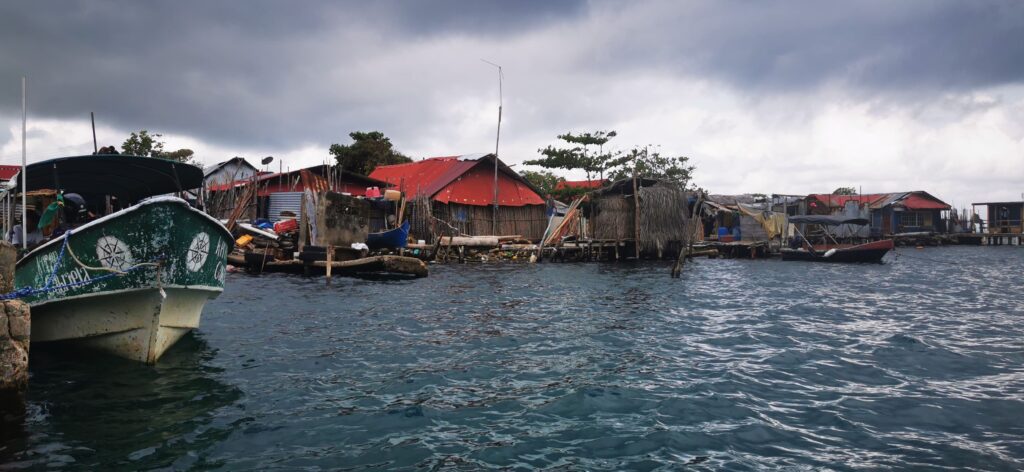
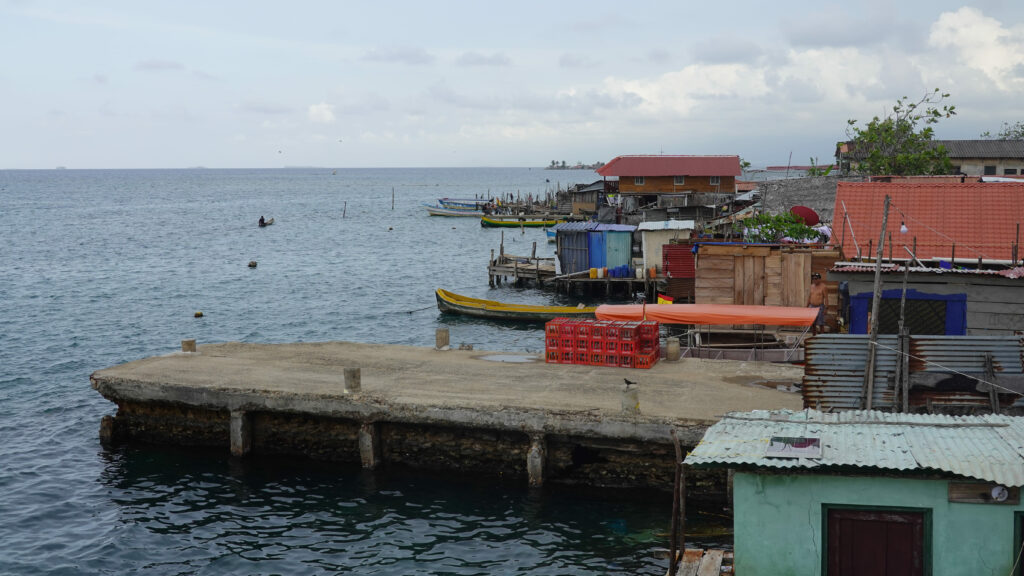
After an hour, the storm was also over again and I decided to explore the island a bit. At the jetty was the meeting point for all the people of the island, who were totally amazed and also flattered that I would be the only tourist on this island for a long time. Nicolas, one of the inhabitants showed me around and introduced me to the life of the people. There are over 1500 people living in this narrow space (200m x 200m). Everyone was totally nice to me and wanted to take pictures with me. In the evening I was invited by some men to go with them to the neighboring island to drink some beers in the pub. The evening was fun, but it was scary to observe that the locals have quite a drinking problem. What I found sad was to see that women are unfortunately treated very deprecatingly, not allowed to drink alcohol and then condescended to by the drunken men.
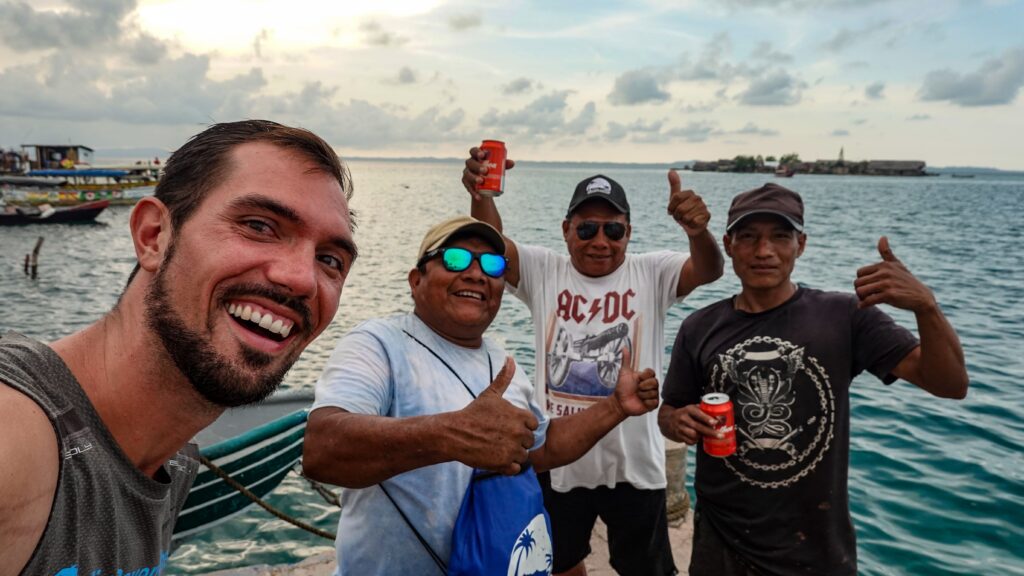
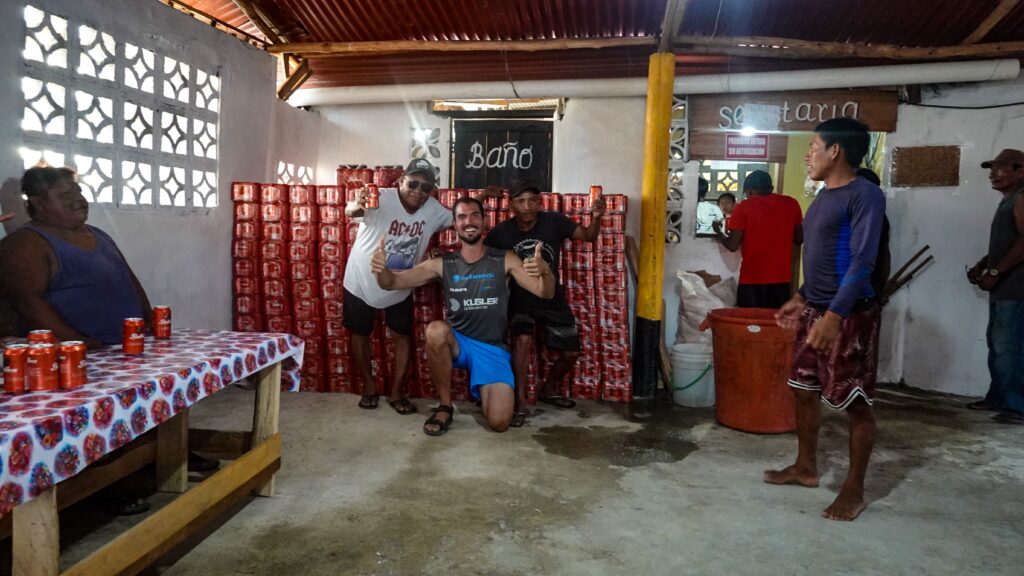
The next day I went to the port again to catch the supposed boat to Colombia. At the port, an employee immediately came up to me, who remembered me and said that the boat had already left during the night. One person had died and they wanted to bring the body back as soon as possible. There would now be no boat that day and the next one would probably not come for two or three days. Quite frustrated to be stuck at this place and to have no prospect of a crossing to Colombia for the time being, I sat in the harbor restaurant. A short time later I was approached by a young man who saw my bike and asked me if I wanted to go to Colombia. I was quite taken aback by his question. He told me that he would ship goods to Colombia once a week with his wife. Since there would be enough space on the boat and to make the trip more economical, they would take me with them the next morning. Now I was motivated again and full of joy, because I could come directly to Colombia for a very fair price.
Leo, the young cyclist who lives near my hometown and whom I had met on the Baja California, wrote me a few days before that he was also on his way to Colombia and that we would probably miss each other by a day or two. After waiting on the spot for a while now and hearing about the new opportunity, I contacted him to say that if he would hurry, he could join me on the boat. In the afternoon he arrived in “Puerto Carti” and was glad that everything was organized and he did not have to be stuck there for several days. To protect them from the salt water, we wrapped the bikes in plastic sheets and loaded them on the boat to leave for Colombia early the next day.
Besides an engine failure caused by a blockage of the cooling water pipe due to the garbage in the sea, which was quickly forgotten by borrowing a replacement engine, the crossing went smoothly. After 8 hours we entered Colombian soil in “Capurgana” and had to spend one night there, then the next morning by speedboat to “Necocli”, a small coastal town on the South American mainland.
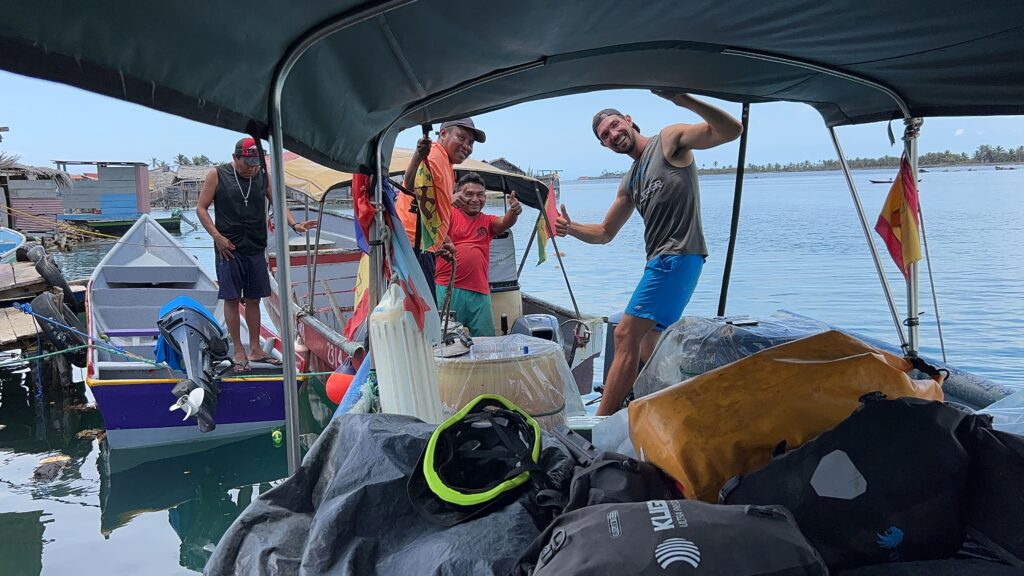

Leo had gone to “Turbo”, a city 50 km further south. At the end of May he will finish his tour in “Bogota” and then start studying in Germany. At just 20 years old, I think it’s pretty brave of him to take on such an adventure and think that he has gained experiences that no study or anything else can teach him and that shape him immensely.
In “Necocli” I then experienced the situation of the migrants as described at the beginning, very closely. New people were arriving every day. Most of them are Venezuelans hoping for a better life in Central or North America because of the miserable conditions in their own country. What amazed me was that Africans and Chinese were also among the migrants, taking such detours to get to the US. Most of the time they have spent the last of their savings to get here and are waiting until they have earned at least $300 for passage, which is half a fortune for people. Even among the migrants, there is classification. The smugglers sometimes demand up to $600 from the Africans or Chinese. The migrants also have to take different routes through the jungle, some of which are much more dangerous. The smugglers put so much pressure on the people and make a huge profit for themselves.

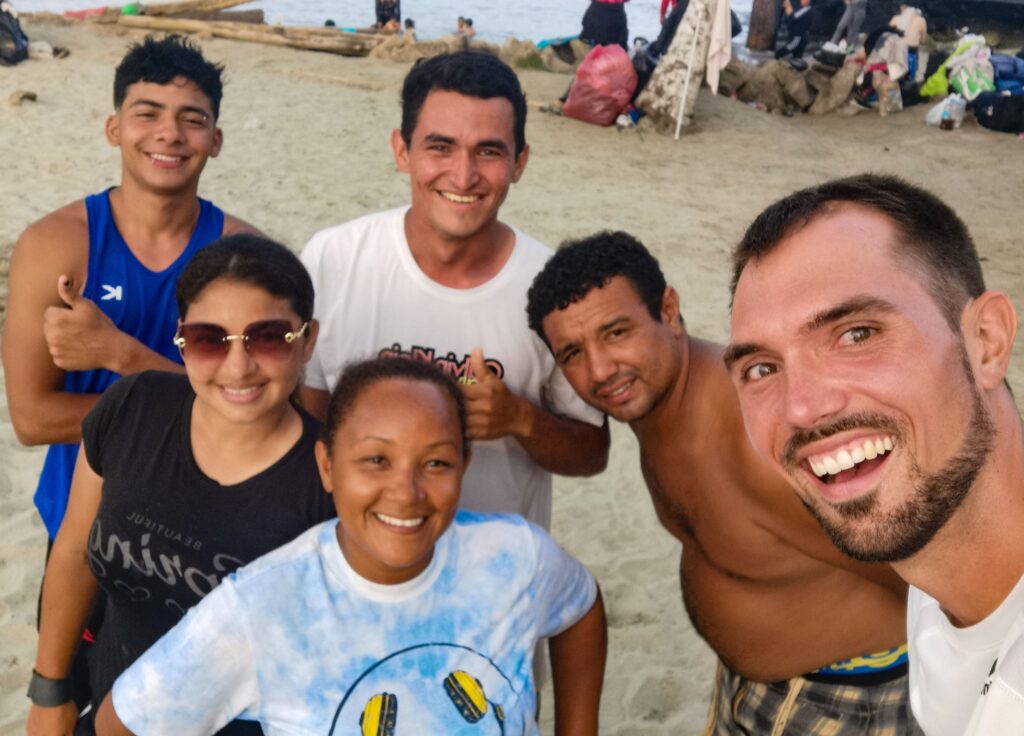
I wanted to conduct an interview with “Deineker”, a young Venezuelan whom I met on the beach with other Venezuelans. The people were incredibly nice and told me about their journey and the terrible conditions in their home country. As soon as I set up the cameras and started the interview, a man on a motorcycle came by and insisted that I turn the cameras off immediately or I would be in tremendous trouble. He probably thought I was a journalist and wanted to prevent me from speaking critically about the situation. There is hardly any coverage of it in the international media and he made it clear to me that this should continue to be the case. The situation was very tense, but the others on the beach tried to help me and to relax the situation, so that the motorcyclist went on again.
Only afterwards did I realize how dangerous this could have been and I was happy that once again everything went well. After this incident, the decision to travel the next kilometers to Medellín by bus was very easy for me. I definitely didn’t want to mess with people like that and left the very next morning. I hope that “Deineker” and the others have a safe passage to Panama and wish them all the luck on their journey!



